Hirantha Perera


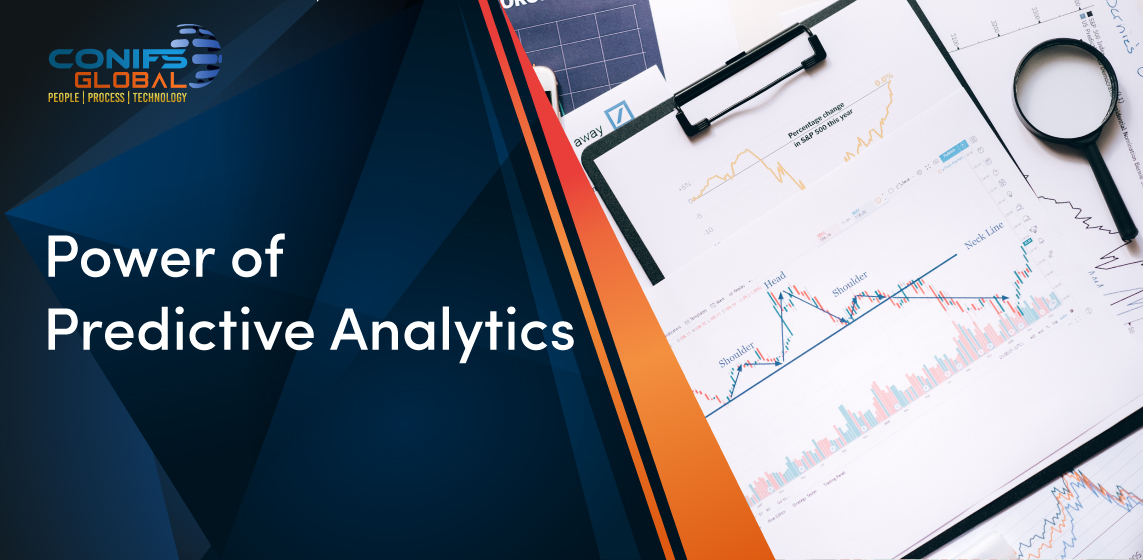
What is Predictive Analytic?
Using data, statistical algorithms, and machine learning approaches, predictive analytics forecasts the likelihood of future outcomes based on historical data. The objective is to provide the most accurate prediction of what will happen in the future in addition to understanding what has already occurred.
Predictive analytics’ history dates to 1689. Many people contributed to the development of this field to the last 50 years’ worth of technological advancements. It’s right to say that modern technologies like relational databases, faster CPUs, and even Hadoop and MapReduce have made predictive analytics a usable tool for decision-making. Predictive analytics, however, have been used for centuries, according to history. One of the first applications of predictive analytics was in underwriting back when shipping and trade was primarily conducted traveling the seas.
Science & techniques behind predictive data analytics
Predictive models develop (or train) a model that may be applied to forecast values for various or new data sets using known outcomes. Based on estimated appropriateness from a set of input variables, modeling produces outcomes in the form of predictions that reflect a probability of the target variable (for example, revenue).
This differs from descriptive models that assist you identify important relationships and figure out why something happened or descriptive theories that describe what happened. Analytical approaches and processes have entire books devoted to them. Here are some fundamentals to get you know.
There are two types of predictive models. Classification models predict class membership. For instance, you try to classify whether someone is likely to leave, whether he will respond to a solicitation, whether he’s a good or bad credit risk, etc. Usually, the model results are in the form of 0 or 1, with 1 being the event you are targeting. Regression models predict a number – for example, how much revenue a customer will generate over the next year or the number of months before a component will fail on a machine.
The three most popular methods for predictive modeling are neural networks, regression, and decision trees.
Decision trees are categorization models that divide data into subgroups according to groups of input factors. This helps you understand a person’s action plan. A decision tree resembles a tree with each leaf serving as a typology or decision and each branch serving as an option among several alternatives.
One of the most widely used statistical techniques is regression (both linear and logistic). Regression analysis determines how different variables are related. It identifies important patterns in huge data sets and is frequently used to evaluate the degree to which factors, such as price, influence the movement of an asset. It is designed for continuous data that may be assumed to follow a normal distribution.
Advanced modeling tools like neural networks may simulate incredibly complicated relationships. They are well-liked since they are strong and adaptable. They are powerful because they can handle nonlinear relationships in data, which are becoming more prevalent as we gather more data. They are frequently used to validate the results of straightforward methods like decision trees and regression. Pattern recognition and some AI techniques that visually “model” parameters are the foundation of neural networks.
Other Popular Techniques
Benefits Of Predictive Analytics
Decision-making can be done at a higher level because of predictive analytics. You can make more wise decisions the more data the system has at its available. Large amounts of data can be analyzed to find patterns and trends, giving organizations information they might not have had before.
The use of predictive analytics enhances resource management, inventory forecasting, organizational efficiency, performance optimization, and income generation. It enables them to proactively enhance their production processes and respond appropriately when necessary.
Patterns can be found using predictive analytics to spot and stop illegal activity. Predictive analytics aids in the identification of anomalies that could point to cyberthreats and vulnerabilities as cybersecurity becomes more prominent. This assists businesses in putting appropriate policies in place, protecting their information and operations from fraud and other online threats.
In the financial and insurance industries, predictive analytics is utilized to create accurate and trustworthy client profiles that aid in efficient decision-making. For instance, credit ratings determine a person’s creditworthiness, which lowers the risk to the company.
Marketing strategies heavily rely on understanding consumer behavior and buying patterns, and predictive analytics makes it easier to analyze data and find fresh ways to draw in or keep customers.
Where Can Predictive Analytics Be Applied?
Predictive Analytics Software Packages
By extracting data from data sets to identify patterns and trends, predictive analytics software mines and analyzes historical data patterns to forecast future results. Business managers can use decision models created by analysts using predictive analytics solutions to plan for the optimal outcome using a wide range of statistical analyses and algorithms. Predictive analytics software is used by analysts, business users, data scientists, and developers to better understand consumers, partners, and products as well as to spot possible dangers and commercial possibilities. Predictive analytics programs enable organizations to use big data (both stored and real-time) to move from a historical view to a forward-looking perspective of the customer. These tools can be deployed both on premise (usually for enterprise users) and in the cloud.
Popular Predictive Analytics Software Packages in 2022
Ability to make better data-driven decisions and act using Qlik Sense. From visualization and dashboards to natural language analytics, customizable and embedded analytics, reporting, and alerting, the system offers enhanced analytics for every business need. Its innovative associative technology offers unique capabilities for merging data and exploring information, boosting human intuition with AI-powered insights.
Alteryx is a creative, end-to-end, low-code / no-code data analytics platform that enables anybody, anywhere, to transform huge amounts of information into rapid insights that support daily breakthroughs. Today, businesses all around the globe on Alteryx to quickly upskill their staff and achieve results that have a significant impact on the bottom line.
With the SAP Analytics Cloud solution, you can easily access various sources of data while combining analytics and planning with integration with SAP applications. You can make decisions with confidence due to SAP Analytics Cloud’s support for integrated planning processes throughout the whole company and its role as the analytics and planning solution within the SAP Business Technology Platform.
One of the leading visual data science and machine learning solution is the IBM SPSS Modeler. By expediting the core functions for data scientists, it supports businesses in accelerating time to value and desired results. Leading businesses around the world rely on IBM for machine learning, predictive analytics, model management, and data discovery to leverage their data assets. With full, pre-built algorithms and models that are suitable for hybrid, multi-cloud systems with strong governance and security postures, the IBM SPSS Modeler gives enterprises the ability to tap into data assets and current apps.
To assist data-driven decision making, Minitab Statistical Software provides visualizations, statistical analysis, prediction, and improvement analytics. When an organization’s employees have access to simple analysis tools, they are all given more authority, regardless of their statistical knowledge or geographical location. By providing a complete and best-in-class package of data analysis and process optimization tools, Minitab has helped businesses and institutions identify patterns, address issues, and uncover insightful data for almost 50 years.
Any more information or demo we are willing to help Contact us

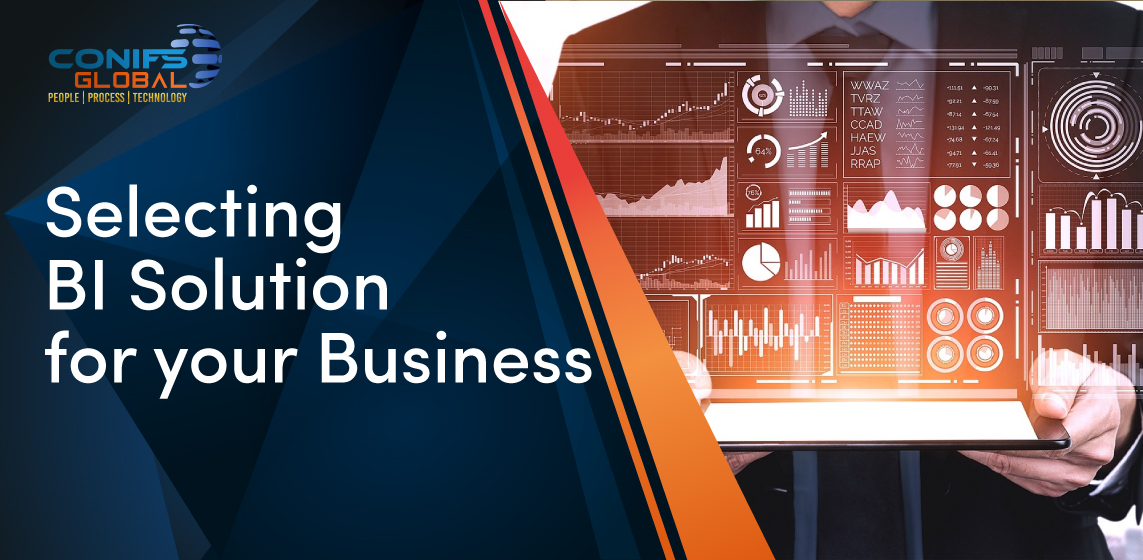
Companies may build products, analyze their advertising efforts, customize content, and create content strategies with the aid of data analysis. Data analytics can ultimately help firms increase performance and boost their bottom line.
Main factors to be aware of when selecting a BI solution for your business.
What kind of data do you want to analyze:
Before choosing the right BI tool, you need to know what kind of data you want to analyze. That is because different BI dashboards are designed for diverse types of data analysis. For example, suppose you want to analyze transactional data (e.g., sales transactions). In that case, a business intelligence tool designed for analyzing transactional data will be more useful than one designed for analyzing social media or other unstructured data sources. You should also think about if your company requires numerous platforms to manage different sorts of data or just one platform to handle all data. For instance, your company might need two different platforms if it must analyze and visualize both transactional and social media data. However, if it only needs to evaluate transactional data, a single platform should be adequate (e.g., sales transactions). The screening process will go much more smoothly if you define your BI tool’s purpose clearly.
Ability to meet specific business needs:
There are eight areas to be evaluated.
Ease of use:
Cost for BI Solution:
Cost for BI Solution:
Most BI tools have an initial cost, but there are also recurring expenses related to using them. These consist of maintenance expenses, consultation and training expenditures, and license renewal fees. Take a note that costs vary from one vendor to another, but here are some things you can expect to pay for:
Any more information or demo we are willing to help Contact us


CONIFS Care a joint initiative by CONIFS and all members of CONIFS Family visited Pore Junior School, Pore, Athurugiriya, with some educational equipment, educational publications school need and loads of love on 11th June 2022. The list of equipment included dean sets, abacuses, clocks, measuring cylinders, school furniture such tables and chairs and educational publications such as Radiant Way books for grade one and two students and Sathnana Paper books for all grade four and five students who faces scholarship examination.
Due to prevailing economic circumstances CONIFS Care looked into the household needs of families of students at Pore Junior School and distributed packs of dry rations among thirty (30) students.
We thank principal and staff members of Pore Junior School for the warm welcome and support extended to us and for the service they render to underprivileged students at the school.
CONIFS Care sincerely hope that we were able to generate glimmer of hope in little minds of students we interacted with, and we strive to continue our effort to promote education, youth empowerment and environmental protection. As people centric organization that generate value through human ingenuity CONIFS indeed is there when people are in need.



















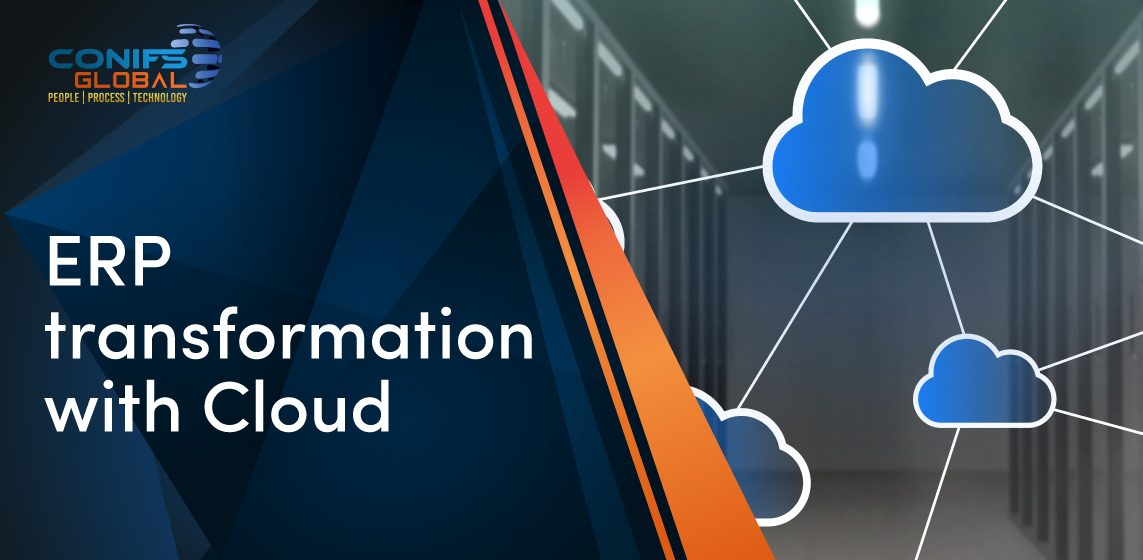
Business world is continuously improving in order to make the things easier quicker and cost effective. The cloud technology is also such technological invention which pitched in the IT industry to serve business needs. Businesses are increasingly using cloud solutions to integrate their various systems. ERP (Enterprise Resource Planning) is becoming a more popular cloud solution for small and medium sized businesses (SMBs).
Cloud-based ERP is an enterprise resource planning software that can be accessed via the Internet. All cloud-based ERP software supports basic business functions. It efficiently automates essential business workflow across multiple industries. Basic functions like finance and accounting, human resource management, marketing, customer relationship management and supply chain management functions are some common functions facilitated through ERP. In general, cloud ERP solutions offer a more efficient approach by allowing businesses to take advantage of vast computing power. Shifting to cloud ERP generally offers lower upfront costs, faster implementation and reduced physical and staff resource usage. There are many benefits and reasons why companies are switching from on-premises to cloud ERP. Some of them are,
Lower costs
The initial cost of implementing cloud ERP software is significantly lower than on-premises systems, which can reduce existing costs and thus avoid the need for large-scale capital.
It not only saves capital costs, but also reduces operating costs by eliminating the need for hardware configuration and software upgrades, system management, and performance management compared to on-premises ERP.
Security
Customer or the ERP user can experience higher security with the cloud technology. The security of cloud-based software is often better than the security of on-premises ERP systems. In addition, ERP cloud servers are located in secure and centralized facilities, reducing the risk of physical theft. Cloud ERPs providers focus a lot of their efforts on avoiding downtime and having robust power backups and fail-safes in place.
Implementation
Cloud solutions can be configured and deployed much faster than on-premises systems. These systems are specifically aimed at creating highly responsive, adaptable, and easy-to-implement solutions.
Improved accessibility, collaboration, and agility
Cloud ERP offers improved accessibility, usability, and mobility Compared to on-premise ERPs. Using cloud-based ERP allows for more corporate agility which means employees can easily access the tools they need from anywhere, anytime via the internet. It also gives access to real-time information and provides insights into the status of all processes and data.
Reduce dependency and free up internal IT teams
Moving to a cloud-based ERP can have a major impact on company’s internal IT team. This is especially useful for small businesses to get the most out of their IT team also companies who do not have an IT sector can run smoothly without making these additional investments.
Scalability
Companies are having varying requirements for handling data. It could be seasonal or periodical. Adding new hardware and networking is a main part of expansion when it comes to on-premises ERP expansion. This is time consuming and costly. But cloud ERP systems are much more flexible hence easy to adopt with the demand and available to increase and decrease the capacity on incremental cost basis.
Access to emerging technology
Technology is rapidly evolving today. With the advancement of technology, the competitiveness of companies has also increased. Advanced analytics, artificial intelligence, machine learning, and other technological advancements enable the use of massive volumes of data. They can improve forecasting accuracy, discover hidden insights, improve productivity, and offer innovative products. Cloud ERP allows taking advantage of this prominent technology more efficiently and cost-effectively. The service already includes Artificial intelligence, machine learning, analytics, and other business intelligence technologies. This means that businesses can benefit without the physical infrastructure, expenditures, or technical talent that on-premises systems require.
Real-time data
Cloud based ERP provides real-time data better than traditional systems. The possibilities of inaccurate data are reduced when bottlenecks at various software integration points are removed. Hence, the information given is always up to date because the applications and information are hosted in a central cloud location.
Easier customization
Configuring on-premises ERP systems to match the company objectives is more expensive and needs more time and IT resources than cloud-based ERP. This involves integrating the relevant ERP features with third-party applications and performing any necessary software and hardware upgrades.


Term ESG is not a novel idea or a concept in modern business parlance and same is true for derivative concepts such as ESG Reporting and ESG Investing. ESG guides us to be environmentally sustainable, socially responsible, and standby principles of good governance when we transact business. All responsible corporate citizens have shown their willingness to adhere to principles of ESG with varying degree of commitment. Since inception we as CONIFS never lost sight of ESG and our actions speak for that. More recently we have been asking the question ‘are we doing enough?’ from ourselves. That is how we have been drawn to ‘Equity’ and then from ESG to EESG.
Our construct of ‘Equity’ in the context of ESG centers around the question whether we are doing enough compared to our capabilities?’ Yes, we have tried to be environmentally sustainable by allowing our employees to work from home and thereby reduce carbon emissions and improve psychological wellbeing of employees by cutting down the stress of commuting. But can we do more to towards environmental sustainability and be socially responsible. Driven by this we have given more opportunities for female candidates and at the moment women account for 50% of workforce. We constantly promote female employees to leadership positions and committed to opening new avenues to create flexible environments for working parents.
As responsible employer we pegged our employee salaries Euro to absorb the effect of inflation in Sri Lanka and we did it with transparent and equitable manner. In our effort to be socially responsible, we focused our efforts on youth empowerment. This year we have increased number of internship opportunities for university undergraduates and working hard to increase the quality of internship with focused training, opportunities for explore new things and better compensation. In an economic situation where most are vying to reduce expenditure, we have decided to increase our CSR budget with the aim of consoling fellow citizens who are in distress.
At CONIFS, ESG is not cliché or just another tag line but contrary it is a governing principle and all at CONIFS are committed to it. From ESG we in journey towards EESG with increased focus on whether our efforts and commitment towards ESG is proportionate to our capabilities.
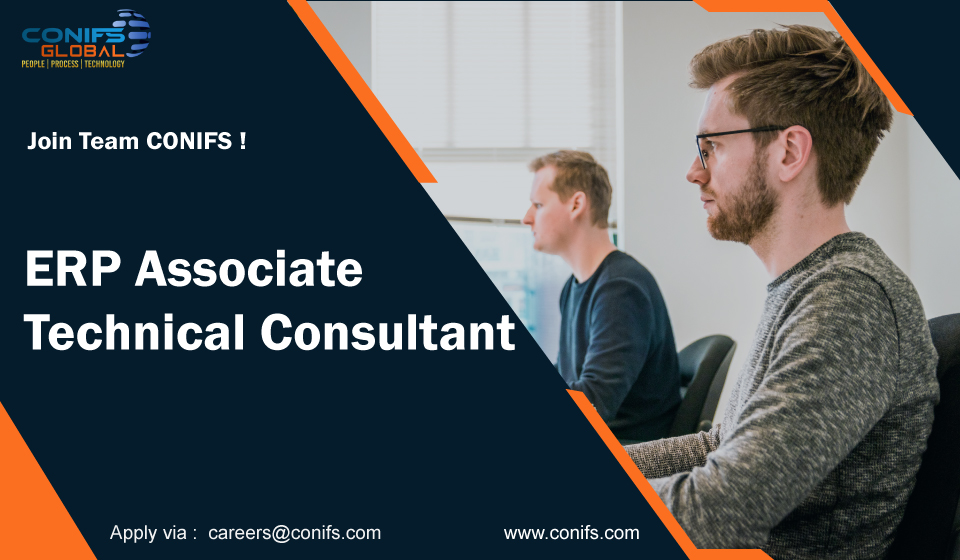
Why CONIFS?
CONIFS have a flat organization culture everyone likes to help each other and having unpretentious attitude. And you will be a part of a team together with high competent and experienced colleagues who engage in exciting assignments and you will get great development opportunities to skills up your development skills. We have pegged our employee salaries Euro to absorb the effect of inflation in Sri Lanka. And we have given all our employees opportunity to fully work from home.
Experience and Qualifications
Responsibilities and duties
Develop your career with us.
Please send your CV to careers@conifs.com or submit the online form below.
Why CONIFS?
We have a flat organization culture everyone likes to help each other and having unpretentious attitude. And you will be a part of a team together with high competent and experienced colleagues who engage in exciting assignments and you will get great development opportunities to skills up your development skills. We have pegged our employee salaries Euro to absorb the effect of inflation in Sri Lanka. And we have given all our employees opportunity to fully work from home.
Experience and Qualifications
Responsibilities and duties
Develop your career with us.
Please send your CV to careers@conifs.com or submit the online form below.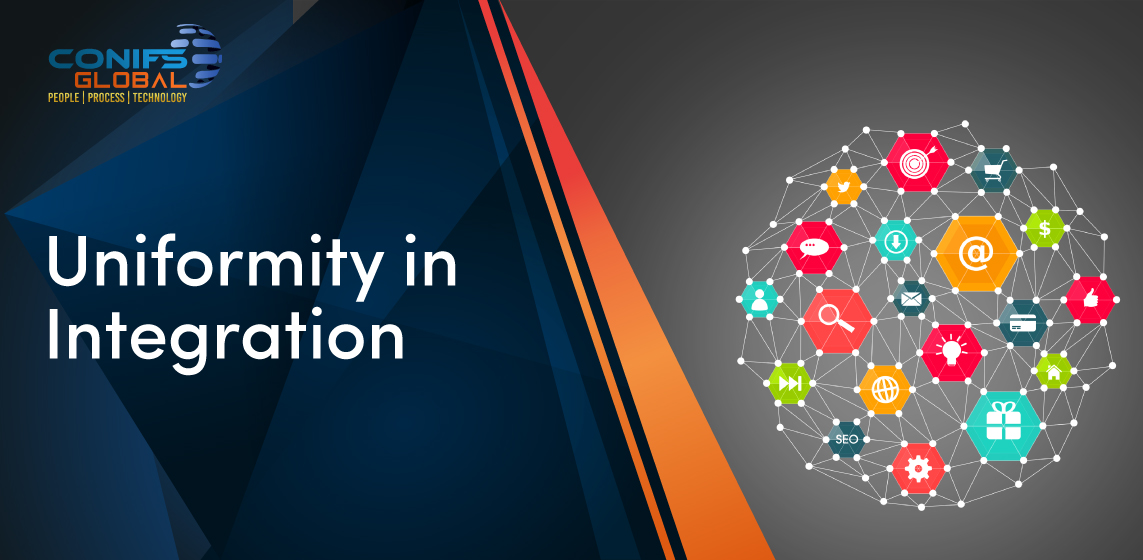
In the area of internet of things (IoT) system integration and integration platforms will reign high and dominate most IT discourse.
It is commonplace that in most enterprise IT infrastructures there is a central enterprise resource planning (ERP) system and multiple supplementary or complimentary applications that augment the capabilities of ERP at the center to serve the needs of business. Today there is an emerging trend that large scale organizations adopt two tier ERP setup where there is high power ERP at center work in tandem with an ERP of lesser caliber placed at identified organization location together with a series of peripheral devices. The complexity of the integration landscape gets compounded by the need to deal with customer or supplier ERPs, different ERPs in subsidiaries or sister companies within the same organization and with multiplicity of devices. All these dimensions of integration entail a robust yet simple integration mechanism that ensure all the applications and devices work seamlessly. But most organizations do not enjoy the luxury of robust yet simple integration mechanism.
One of our customers headquartered in Scandinavia with a global presence used at least three different integration platforms to establish a connection between peripheral applications such as payrolls, expense registration systems, invoice scanning systems, tools handling applications and the central ERP, the IFS Applications at the center. One such integration platform was a ‘gateway’ tool with extremely limited market penetration, another was the inbuilt ‘connect’ capabilities of their ERP and third was the old fashion ODBC method. None of these were capable of handling complexities of customer’s IT landscape and reach the level of sophistication they desired.
Then they were introduced to the WSO2, a world-renowned integration and identity access management platform (www.wso2.com ). With WSO2 our customer has been able to replace multiple modes of integration with a single mode of integration and thereby achieve the uniformity in integration they desired. Apart from technological superiority and security offered by WSO2, moving to WSO2 brought forward operational advantages to the organization.
As we noticed such operational advantages are,
Reduce Rework and Increase Reuse
Our customer is a global service provider to energy sector with special focus on the offshore market. On daily basis they deal with enormous number of employees and use high number of IT applications such as planning tools, time registration tools, expense management tools, payroll to cater to country specific needs. All these applications need one common set of data, the employee information. Previously there were multiple and ad hoc ways to deal with each peripheral application but with WSO2 there is one employee information output from their ERP that can cater to unique needs of peripheral applications. When the next new application comes no need begin from nothing, but instead existing interfaces can cater to it. So, rework is reduced, and use of existing features is increased.
Access to Resources
One of the integration platforms previously used, the ‘gateway’ tool was a creation of one of their IT suppliers. The knowledge about the tool was with handful of employees at the supplier. Since its low market penetration, no third parties to which the customer could resort to for support or consultancy.
Therefore, the access to quality resources when the customer needs them was extremely limited. But WSO2 comes with state-of-the-art customer support of their own and network of partners who are equally capable of supporting users of WSO2.
Reduce Dependency
With lesser-known products comes the hazel of lesser access to capable resources, lesser competitive pricing and higher dependency on vendor. But with a mature product with significant market penetration, you get the benefit of competent resources at competitive prices and thereby reduce or even diminish dependency on vendors with limited global presence.
Uncompromised Uptime
No product is fool proof, and any product can get glitches here and there. WSO2 ensures uncompromised uptime with superiority of its product backed by professional user support provided by WSO2 itself and a series of capable partners such as CONIFS. This availability of support and thereby constant push to reduce downtime is not a luxury that most integration platforms can boast of.
Integration itself is not a destination but instead it is more of a journey with constant product updates WSO2 together with its partner like CONIFS is committed to enable the next level of IT enablement for enterprises.
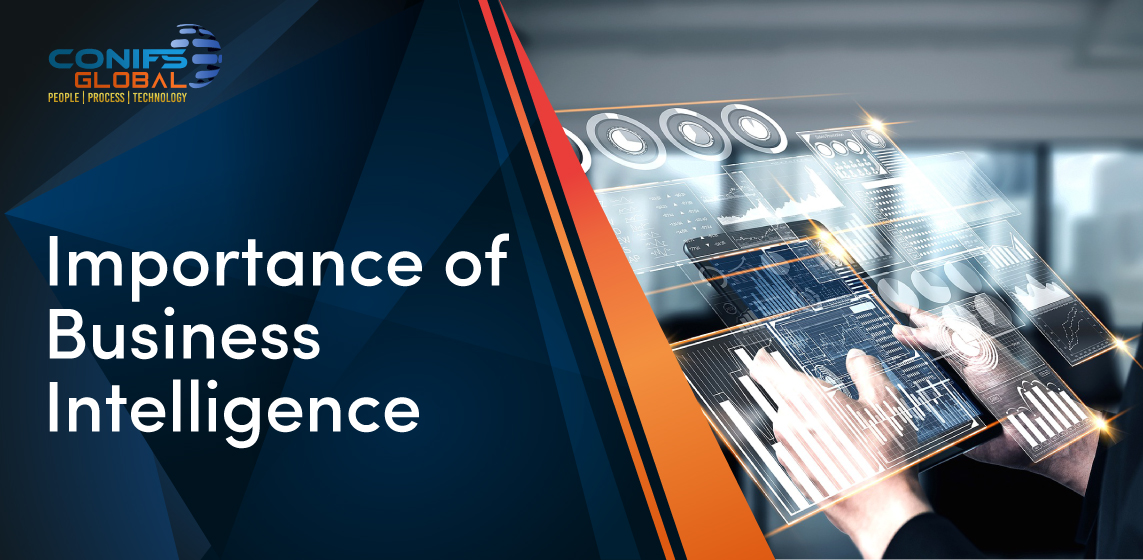
Business Intelligence (BI) is a technological process of transforming data into action information for the benefit of stakeholders. This information helps executives, managers and workers make informed business decisions. Set of data which have been collected over a period or wide array is used as the base in BI solutions. BI solutions predominantly focused on business insights for the proactive decision making and used for planning and risk management purposes. However, BI solutions could be used to provide historical, current and predictive views of business operations. Business reporting, online analytical processing, data and process mining, text mining, complex event processing, benchmarking, business performance management are some common functions of business intelligence.
Business intelligence helps businesses to analyze customer behavior and competitor behavior, predict market or industry behavior, set benchmarks and track performance. Overall business performance and competition related decisions are fueled by the Business Intelligence functions. Insightful analysis discovers potential issues or problems for business’s contingency planning.
Different industries are aligned business intelligence tools to manage and coordinate its day-today operations.
Logistics Industry
Logistics is one of the most complicated industries which requires constant overlooking and immediate action based on delivery stage in the supply chain. Large data sets are processed and display through customized dashboards to track the orders effectively. Graphical representation methods being used to make the dashboards user friendly and informative.
Banking and Finance
Financial and banking companies deal with large amount of data and requirement is to analyse data and identify marketing opportunities by combining advanced technologies such as Microsoft SQL, machine learning. AI with cloud-based Power BI helps financial and banking companies collect, store, and analyze real-time data.
Construction Industry
Construction industry is complicated industry with multiple needs. It required fine deal with work schedules and deadlines, suppliers, and production processes. Collaboration and coordination for running everything smoothly and getting all the processes done is an integral part when it comes to construction industry. Business intelligence helps to project wise overlooking of all touchpoints in one place through all-inclusive dashboards.
Retail Industry
Stock following is one of the retailer’s prominent BI benefits from the time an order is delivered to the point of sale. BI use data warehousing to empower retailers to track the supply handing. In addition to tracking the orders, BI helps to determine the quantity based on the sales forecast and alerting to re-order on time. Human decision making on continuous supply is replaced with I suggestions on the process.
Manufacturing Industry
Industry-specific knowledge is vital for manufacturing businesses. Business Intelligence helps to analyze manufacturing process to identify the business process bottlenecks and establish effective and efficient process. BI serves as the primary source of structured and reliable solutions for bringing together all related processes to eliminate errors. Manufacturing processes can be easily optimized and improved through a manufacturing dashboard that integrates key data through real-time analysis, features vast interactivity and other features, and predicts what will happen in the future.
At CONIFS our mission is to transform treasure trove of transactional data sitting in your ERP into value generating information insights for decision makers. In our view implementing a BI solution in an organization is more of a business venture than a technical venture handled by few individuals in an isolated corner within IT department. We can help you to make a dream of holistic, robust, and user-friendly BI solution a reality.
Out experts specialise in Integrations, ERP Services, BA/BI Requirements
Copyright © 2025 CONIFS GLOBAL Pvt Ltd